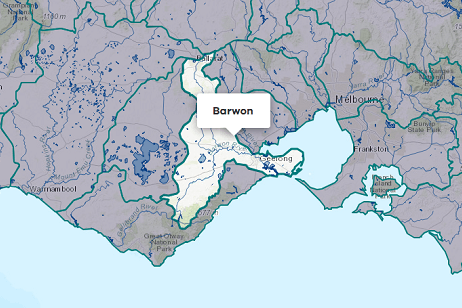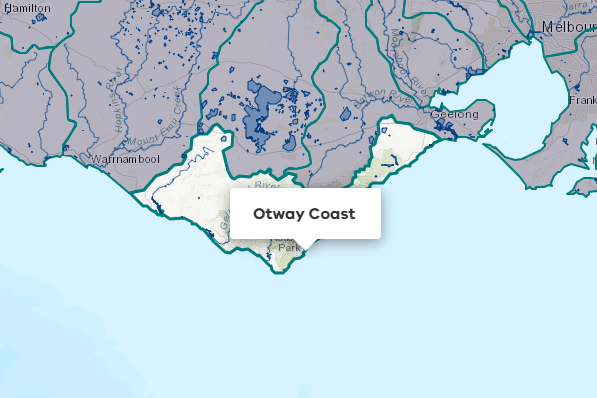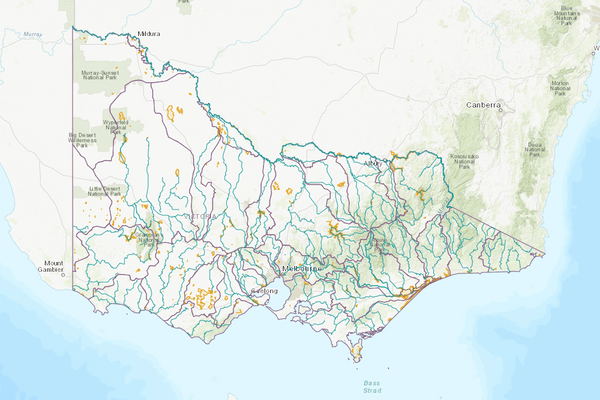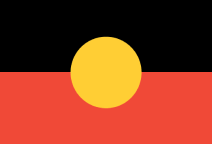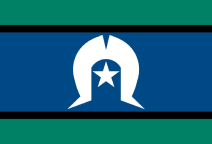About the area
The Corangamite basin is a landlocked basin in western Victoria. Rivers and streams within the basin terminate in a series of inland lakes, the largest of which is Lake Corangamite. Woady Yaloak Creek is the largest waterway.
For the purpose of these Accounts, the terminal lakes are not considered part of the basin, i.e. outflow from the basin ends up in the lakes.
The basins annual rainfall ranges from 400-900 mm.
More information on water management and accounting is detailed in Water explained.
2023-24 overview
Available water
Catchment inflow was lower than the previous year.
Licensed diversion restrictions
There were no restrictions on licensed diversions, the same as the previous year.
Water use
Less water was diverted for consumptive purposes than the previous year.
When compared to the previous year, in 2023-24:
- less rainfall was received
- catchment inflow was lower
- licensed diversion restrictions were the same with no restrictions on licensed diversions from streams
- less water was diverted for consumptive purposes.
Climate
Rainfall
In 2023-24, less rainfall was received in the Corangamite basin than the previous year. Rainfall was:
- lowest on record in the southern half of the basin, from Lismore to the Otway National Park
- very much below average in most of the northern half
- below average in a small area in the north-east near Enfield State Park.
Figure 1 displays the rainfall received in 2023-24 compared to the long-term average (1975-2024).
Figure 1: Rainfall deciles, Corangamite basin
Sourced from the Australian Bureau of Meteorology
River basin water balance
This section describes the known and estimated inflows, outflows and change of storage volumes in the basin.
More detail on catchment inflows, diversions and small catchment dams can be found in the sections below the water balance.
Of the total inflows to the Corangamite Basin in 2023-24, 95% flowed into the Ramsar-listed Western District Lakes (considered outflows from this basin).
Water balance table
The table below shows the total volumes of water available and supplied from water resources in the Corangamite basin in 2023-24.
Table 1: Water balance, Corangamite basin
Inflows
Catchment inflow
Catchment inflow represents the volume of water flowing into the waterways of a basin. It is calculated as the total outflows and change in storage minus the known inflows. The long-term average inflow presented has been updated from the previous Victorian Water Accounts, as detailed in Water Explained. The updated long-term average inflow has been applied to this year and the previous year’s volume in this report.
Below average inflows of 48,736 ML were received (20% of the long-term average of 242,700 ML), much less than the previous year (296%).
Below average inflow received
Catchment inflow was 20% of the long-term average annual volume of 242,700 ML.
Less water received than the previous year
Catchment inflow was much less than the previous year (296% of the long-term average).
Wastewater treatment plants
Water treated at wastewater treatment plants can be used to supplement water available in the basin. Water discharged to waterways from treatment plants is included as an inflow to the water balance.
Information on treatment plants is reported in the water supply local reports for the water corporation responsible for managing the plant.
In this basin, wastewater treatment plants are managed by Barwon Water and Wannon Water.
Outflows
Diversions
In 2023-24, 1,184 ML was diverted for consumptive uses: town, domestic and stock, irrigation and commercial supply. This was less than the previous year (4,735 ML), due to the decrease in the estimate of small catchment dam use volume.
Small catchment dams
Water harvested, used and lost by small catchment dams (farm dams) is included in the water balance.
Table 2: Small catchment dams, Corangamite basin
Entitlements and compliance
Entitlements provide the basis for how water is shared in the basin.
Entitlement volumes
Rights to water in the Corangamite basin are shown in Table 3.
Entitlement volumes represent a maximum volume of water that can be taken in a one-year period. The volume available in a particular year is dependent on the rules for allocating water set out in the entitlement and the seasonal conditions in that year, which can vary. The rules for allocating water under an entitlement differ between entitlements and systems. This affects the ability and likelihood of water being taken in a particular year.
Table 3: Annual entitlement volumes at 30 June, Corangamite basin
Available water and take under entitlements
Total water available under entitlements represents the volume of water that was available to be taken by entitlement holders in 2023-24. The volume includes carryover from the previous year, seasonal allocations and net trade into the basin.
Water taken
There was 372 ML used in 2023-24, less than the previous year (1,589 ML).
Restrictions on licensed diversions from streams
There were no restrictions on licensed diversions from streams in 2023-24, the same as during the previous year.
Available water and take table
This table shows the volume of available water and the volume taken under entitlements in 2023-24.
More information on available water and take has been detailed in How we account for surface water.
In 2023-24, less water was taken under entitlements than the previous year.
Table 4: Available water and take under entitlements, Corangamite basin
Compliance
Compliance against water entitlements is reported for this basin in 2 areas:
- entitlement issued: that the volume of entitlements issued in a basin does not exceed formal caps, and has not increased without appropriate approvals
- water taken: that the volume of water taken during the year does not exceed the volume considered to be available for consumptive and/or in-stream use during that year.
Total entitlement volume
There was no net increase in the total entitlement volume from the previous year.
Total volume diverted
The total volume diverted under entitlements (372 ML) was within the volume available for the year (4,737 ML).
Water for the environment
Environmental watering sites
There are no environmental entitlements in the Corangamite basin, so no active environmental watering occurs.
However, important sites and environmental values in the Corangamite basin that depend on water for the environment include:
- the Western District Lakes, including lakes Corangamite, Gnarpurt, Milangil, Terangpom, Beeac, Colongulac and Cundare, which are internationally significant wetlands listed under the Ramsar Convention and which rely on freshwater inputs from the Corangamite basin to function ecologically
- wetlands of national importance, including the Kooraweera Lakes, Lough Calvert, Lake Thurrumbong and Cundare Pool
- native fish populations and the Corangamite water skink.
Environmental water reserve
In 2023-24, water for the environment in the Corangamite basin comprised:
- water set aside for the environment through the operation of passing flow conditions on licensed diversions
- all other water in the basin not allocated for consumptive use: this water also provides social, recreational and cultural benefits.
Management responsibilities
Management of water in the Corangamite basin is undertaken by various parties
| Authority | Management responsibilities |
|---|---|
| Barwon Water |
|
| Central Highlands Water |
|
| Corangamite Catchment Management Authority |
|
| Southern Rural Water |
|
| Wannon Water |
|

